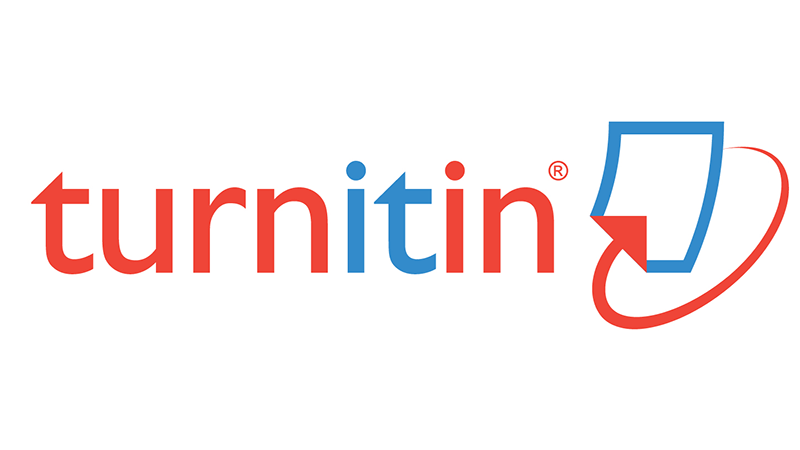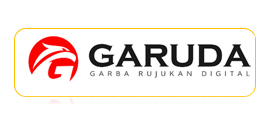Pendidikan Karakter melalui Membaca Kisah Tokoh Sejarah: Menelusuri Pijakannya
Abstract
Dalam pelaksanaan Kurikulum 2013 sekarang ini, pemerintah menekankan penguatan pendidikan karakter. Karakter yang paling ditekankan dalam kurikulum tersebut adalah religius, nasionalis, gotong royong, integritas, dan mandiri. Karakter tersebut bisa diteladani dari tokoh-tokoh sejarah. Buku-buku serial tokoh sejarah yang beredar di pasaran bisa dimanfaatkan untuk pembelajaran karakter. Penggunaan cerita-cerita atau kisah-kisah bisa menjadi cara effektif untuk mengajarkan karakter kebajikan. Mengapa kisah tokoh sejarah bisa dimanfaatkan untuk mengajarkan karakter kepada siswa? untuk menjawabnya, tulisan ini menguak kontribusi skema kognitif, pengetahuan awal, dan konstruksi makna dalam proses membaca kisah tokoh sejarah.
Keywords
Full Text:
PDFReferences
Adams, M. J. & Collins, A. 1977. A schema-theoretic view of reading. Technical Report No. 32. University Of Illinois at Urbana-Champaign: Center for the Study of Reading.
Adam, M. & Carpenter, P. A. 1992. A capacity theory of comprehension: individual differences in working memory. Psychological Review, 99 (1), 122-149.
Agboola, A. & Tsai, K. C. 2012. Bring character education into classroom. European Journal of Educational Research, 1 (2), 163-170.
Almerico, G. M. 2014. Building character through literacy with children’s literature. Research in Higher Education Journal, 26, 1-13.
Bower, G. H. 1976. Experiments on story understanding and recall. Quarterly Journal of Experimental Psychology, 28:4, 511-534
Caillies, S., Denhiere, G. & Kintsch, W. 2002. The effect of prior knowledge on understanding from text: Evidence from primed recognition. European Journal Of Cognitive Psychology, 14 (2), 267–286.
Cakir, M. 2008. Constructivist approaches to learning in science and their implications for science pedagogy: a literature review. International Journal of Environmental & Science Education, 3 (4), 193-206.
Derry, S. J. 1996. Cognitive schema theory in the constructivist debate. Educational Psychologist, 31 (3/4), 163-174.
Doolittle, P. E. 2014. Complex constructivism: a theoretical model of complexity and cognition. International Journal of Teaching and Learning in Higher Education, 26 (3), 485-498.
Driver, S., Asoko, H., Leach,J., & Mortimer, E. 1994. Constructing scientific knowledge in the classroom. Educational Researcher, 23 (7), 5-12.
Gambrell, L. B. & Jawitz, P. B. 1993. Mental imagery, text illustrations, and children’ story comprehension and recall. Reading Research Quarterly, 28 (3), 264-276.
Graesser,A. C., Singer, M., & Trabasso, T. 1994. Constructing inferences during narrative text comprehension. Psychological Review, 101 (3), 371-395.
Hildebrandt, C. & Zan, B. 2008. Constructivist approaches to moral education in early childhood. Dalam Larry P. Nucci & Darcia Narvaez. Handbook of moral and character education. New York: Routledge. Halaman 352-369.
Johnson-Laird, P. N.1980. Mental models in cognitive science. Cognitive Science, 4, 71-115.
Johnson-Laird, P. N. 1987. The mental representation of the meaning of words. Cognition, 25, 189-211.
Kamalski, J., Sanders, T. & Lentz, L. 2008. Coherence marking, prior knowledge, and comprehension of informative and persuasive texts: sorting things out. Discourse Processes, 45, 323–345.
Kelly, E. M. 2014. The relationship between readers’ prior knowledge and comprehension. Tesis. State University of New York at Fredonia
Kurtz, V. & Schober, M.F. 2001. Readers’ varying interpretations of theme in short fiction. Poetics, 29,139–166.
Lee, K., Talwar, V., McCarthy, A., & Ross, I. 2014. Can classic moral stories promote honesty in children? Psychological Science, 25(8) 1630-1636.
Liu, T. C., Lin, Y. C. & Paas, F. 2014. Effects of prior knowledge on learning from different compositions of representations in a mobile learning environment. Computers & Education, 72, 328–338.
Mandik, P. 2001. Mental representation and the subjectivity of consciousness. Philosophical Psychology, 14 (2), 179-202.
Mishraa, P. & Brewer, W. F. 2003. Theories as a form of mental representation and their role in the recall of text information. Contemporary Educational Psychology, 28, 277–303
Narvaez, D. 1998. The Influence of Moral Schemas on the Reconstruction of Moral Narratives in Eighth Graders and College Students. Journal of Educational Psychology, 90 (1), 13-24.
Narvaez, D. (2001). Nurturing Character in the middle school classroom: introduction to the project and framework. Minnesota Department of Children, Families and Learning & Th University of Minnesota.
Narvaez, D. 2002. Does Reading Moral Stories Build Character? Educational Psychology Review, 14 (2), 155-171.
Peraturan Presiden Republik Indonesia Nomer 87 tahunn 2017 tentang Penguatan Pendidikan Karakter.
Poulsen, D., Kintsch, E., Kintsch, W. & Premack, D. 1979. Children’s Comprehension and Memory for Stories. Journal Of Experimental Child Psychology, 28, 379-403.
Pressley, G. M. 1976. Mental imagery helps eight-year-olds remember what they read. Journal of Educational Psychology, 68 (3), 356-358.
Prestwich, D. L. 2004. Character education in America’s schools. The School Community Journal, 14 (1): 139-150.
Recht, D. R. & Leslie, L.1998. Effect of prior knowledge on good and poor readers' memory of text. Journal of Educational Psychology, 80 (1), 16-20.
Sanchez, T., Zam, G., & Lambert, J. 2009. Story-telling as an effective strategy in teaching character education in Middle Grade Social Studies. Journal for The Liberal Arts and Sciences, 13 (2): 14-23.
Shapiro, A. M. 2004. How including prior knowledge as a subject variable may change outcomes of learning research. American Educational Research Journal, 41 (1), 159-189.
Smith, E. E. & Swinney, D. A. 1992. The role of schemas in reading text: a real-time examination. Discourse Processes, 15, 303-316.
Stein, N. L. & Trabasso , T. 1981.What's in a story:an approach to comprehension and instruction. Technical Report No. 200. University Of Illinois at Urbana-Champaign: Center for the Study of Reading.
Subur. 2015. Pembelajaran nilai morral berbasis kisah cetakan 1. Yogyakarta: Kalimedia.
Terwel, J. 1999. Constructivism and its implications for curriculum theory and practice. Journal of Curriculum Studies, 31 (2), 195-199.
Tyra, C. Bringing books to life: teaching character education through children’s literature. Diakses pada tanggal 9 April 2018 dari tccl.rit.albany.edu/knilt/images/f/fe/Tyra.pdf
Vitz, P. C. 1990. The use of stories in moral development: new psychological reasons for an old education method. American psychologist, 45(6): 709-720.
Walker, C. M. & Lombrozo, T. 2017. Explaining the moral of the story. Cognition, 167, 266–281.
Zhang, C. 2010. The teaching of reading comprehension under the psychology schemata theory. Journal of Language Teaching and Research, 1 (4), 457-459.
Zhang, X. 2008. The effects of formal schema on reading comprehension—an experiment with Chinese EFL readers. Computational Linguistics and Chinese Language Processing, 13 (2), 197-214.
Zwaan, R. A. 1999. Situation models: the mental leap into imagined worlds. Current Directions In Psychological Science, 8 (1), 15-18.
Zwaan, R. A. & Madden, C. J. 2004. Updating situation models. Journal of Experimental Psychology, 30 (1), 283–288.
DOI: http://dx.doi.org/10.17977/um0330v1i1p53-62
Refbacks
- There are currently no refbacks.

This work is licensed under a Creative Commons Attribution-ShareAlike 4.0 International License.
Editorial office:
History Department, Faculty of Social Science,
Universitas Negeri Malang
Jl. Semarang No.5 Kota Malang 65145,
Phone. (0341) 551312,
email: jpsi@um.ac.id
Website: http://journal2.um.ac.id/index.php/sejarah/index
E-ISSN 2622-1837

This work is licensed under a CC BY SA 4.0.








